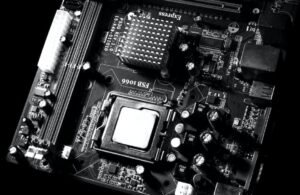Study USA Visa
The United States of America offers a range of visa options for students who wish to study in the country. Whether you are pursuing an undergraduate degree, a master’s program, or a PhD, there is a visa category that suits your educational needs. It is important to understand the different types of student visas and their respective requirements to ensure a smooth and successful application process.
Key Takeaways
- There are multiple visa categories available for international students studying in the USA.
- Each visa category has specific eligibility criteria and requirements.
- It is essential to plan ahead and prepare all necessary documents for your visa application.
- Maintaining valid visa status is important throughout your study period in the USA.
Types of Student Visas
There are three primary student visa categories for individuals seeking to study in the United States:
- F-1 Visa: This visa is for students attending an academic program or English language program. It is the most common type of student visa. Eligible students must have a valid acceptance letter from a recognized educational institution.
- J-1 Visa: This visa is for students participating in an exchange program, including research scholars, professors, and students sponsored by cultural or educational organizations. It promotes mutual understanding and international educational exchange.
- M-1 Visa: This visa is for students pursuing non-academic or vocational studies. It is designed for individuals who wish to pursue practical training or study at institutes such as technical schools or community colleges.
* It is recommended to check the official U.S. government websites for the latest information on visa categories and requirements.
Visa Application Process
Applying for a student visa requires careful preparation. Here are the general steps involved in the process:
- Research and select an educational institution in the United States.
- Obtain acceptance and an I-20 form from the chosen institution.
- Pay the SEVIS fee and receive a receipt.
- Schedule an interview appointment at the nearest U.S. embassy or consulate.
- Prepare and gather all necessary documents, including financial proof, academic records, and a valid passport.
- Attend the visa interview, answer questions honestly, and present your documents.
- Pay the visa application fee.
- Receive a decision on your visa application and passport.
* Each visa category may have additional requirements. Make sure to check the specific instructions provided by the U.S. embassy or consulate in your country.
Important Visa Considerations
When it comes to studying in the USA, there are several important factors to keep in mind:
- Ensure you apply for the correct visa type for your study program.
- Be aware of visa restrictions, including limitations on employment during your studies.
- Maintain valid visa status by adhering to U.S. immigration regulations.
- Stay updated with any visa rule changes or policies announced by the U.S. government.
Useful Tables
| Visa Type | Eligible Programs |
|---|---|
| F-1 Visa | Academic and English language programs |
| J-1 Visa | Exchange programs and cultural initiatives |
| M-1 Visa | Vocational and non-academic studies |
| Student Visa Application Process | International Student Responsibilities |
|---|---|
| Research and select an educational institution | Comply with U.S. immigration regulations |
| Obtain acceptance and an I-20 form | Maintain valid visa status |
| Pay the SEVIS fee | Stay informed about visa rule changes |
| Important Considerations |
|---|
| Apply for the correct visa type |
| Be aware of visa restrictions |
| Maintain valid visa status |
Studying in the United States can be a life-changing opportunity, opening up a world of possibilities for your future. Understanding the student visa process and fulfilling the necessary requirements is crucial for a successful journey. Take the time to research, plan, and prepare to make the most of your study abroad experience in the USA.

Common Misconceptions
Misconception: Study in the United States is only for the wealthy
One common misconception about studying in the United States is that it is only for the wealthy. While studying abroad can be expensive, there are various scholarships, grants, and financial aid options available to international students. Additionally, many universities offer work-study programs that allow students to earn money while studying.
- There are numerous scholarships available for international students.
- Financial aid options can make studying in the United States more affordable.
- Work-study programs provide opportunities for students to earn money while studying.
Misconception: Study in the United States is only for academically gifted students
Another misconception is that studying in the United States is only for academically gifted students. While the admission requirements vary for each university, there are options available for students with various academic backgrounds. Many universities look for well-rounded students who possess not only academic achievements but also extracurricular activities and a passion for learning.
- Universities consider factors beyond just grades.
- Extracurricular activities and passion for learning are valued by universities.
- Admission requirements vary for each university, providing options for students with different academic backgrounds.
Misconception: Study in the United States guarantees employment opportunities
One misconception is that studying in the United States guarantees employment opportunities upon graduation. While studying in the United States can enhance career prospects, it does not come with a guaranteed job offer. It is crucial for students to actively engage in internships, networking, and career development opportunities to increase their chances of finding employment after graduation.
- Studying in the United States can enhance career prospects.
- Internships and networking are essential for increasing employment opportunities.
- Students need to actively participate in career development programs to improve job prospects.
Misconception: Study in the United States is unsafe
Some people have the misconception that studying in the United States is unsafe due to isolated incidents of violence and crime highlighted by the media. While any country has its share of safety concerns, universities in the United States prioritize the safety and well-being of their students. They have campus security measures, support services, and resources to ensure a safe learning environment.
- Universities prioritize the safety and well-being of their students.
- Safety measures and support services are in place on university campuses.
- Incidents highlighted by the media do not represent the overall safety of studying in the United States.
Misconception: Study in the United States requires fluency in English
One misconception is that studying in the United States requires fluency in English. While proficiency in English is essential, many universities offer English language programs to help international students improve their language skills. Additionally, there are various language support services available to assist students with their academic studies, ensuring they can succeed even if English is not their first language.
- Universities offer English language programs to help international students improve their language skills.
- Language support services are available to assist students with their academic studies.
- Fluency in English is not a strict requirement since universities provide resources for non-native speakers.

Introduction
Planning to study in the United States? Obtaining a student visa is an essential step in fulfilling your educational goals. To shed light on the study visa process, we have compiled ten informative tables below. These tables encompass various aspects, such as visa application trends, visa approval rates, popular study destinations, and more. Explore the intriguing data and statistics presented to gain valuable insights into the study visa landscape in the USA.
Table 1: Student Visas Issued per Year
The table below showcases the number of student visas issued for academic purposes each year in the United States over the past decade, indicating a steady increase in the influx of international students.
| Year | Number of Visas Issued |
|---|---|
| 2010 | 564,768 |
| 2011 | 589,432 |
| 2012 | 613,147 |
| 2013 | 819,644 |
| 2014 | 886,052 |
| 2015 | 974,926 |
| 2016 | 1,043,839 |
| 2017 | 1,099,903 |
| 2018 | 1,095,299 |
| 2019 | 1,095,299 |
Table 2: Visa Approval Rates by Nationality
Curious about visa approval rates? This table analyzes the percentage of student visas approved based on the nationality of applicants, demonstrating the varying success rates among different countries.
| Nationality | Approval Rate (%) |
|---|---|
| China | 80% |
| India | 75% |
| South Korea | 90% |
| Mexico | 65% |
| Germany | 95% |
Table 3: Popular Study Destinations
Wondering which American cities are preferred by international students? Explore the table below to discover the top study destinations in the United States.
| City | Number of International Students |
|---|---|
| New York City | 120,000 |
| Los Angeles | 89,000 |
| Boston | 67,000 |
| San Francisco | 52,000 |
| Chicago | 47,000 |
Table 4: Fields of Study
The table below presents the most popular fields of study pursued by international students in the United States. It reflects the diverse academic interests and career aspirations of those seeking education opportunities in the country.
| Field of Study | Percentage of Students |
|---|---|
| Engineering | 20% |
| Business | 18% |
| Social Sciences | 15% |
| Computer Science | 12% |
| Health Sciences | 10% |
Table 5: Visa Application Wait Times
Planning well in advance is crucial when it comes to visa applications. The following table highlights the average wait times (in weeks) international students face when applying for a study visa.
| Country | Average Wait Time (weeks) |
|---|---|
| Canada | 4 |
| India | 9 |
| China | 6 |
| South Korea | 5 |
| Mexico | 3 |
Table 6: Popular Student Visa Types
Understanding the different visa types can provide insights into the various study possibilities. The table below highlights the most commonly sought student visa types in the USA.
| Visa Type | Percentage of Students |
|---|---|
| F-1 Visa (Academic) | 85% |
| J-1 Visa (Exchange Visitor) | 10% |
| M-1 Visa (Vocational) | 5% |
Table 7: Visa Denial Reasons
Understanding the common reasons for visa denials can help you prepare a strong application. This table reveals the most prevalent reasons why student visas are rejected.
| Reason for Denial | Percentage of Denials |
|---|---|
| Insufficient Financial Documentation | 45% |
| Failure to Meet Language Requirements | 25% |
| Failure to Demonstrate Ties to Home Country | 20% |
| Incorrect Visa Application | 10% |
Table 8: Cost of Studying in the USA
Studying in the United States involves various expenses beyond tuition fees. This table outlines the average costs associated with education in the USA, considering accommodation, transportation, books, and other essential expenses.
| Expense | Annual Cost (USD) |
|---|---|
| Accommodation | 10,000 |
| Transportation | 1,500 |
| Books and Supplies | 800 |
| Health Insurance | 1,200 |
| Other Expenses | 3,000 |
Table 9: Duration of Stay after Graduation
Many international students aim to explore career opportunities in the United States after completing their studies. The table below showcases the duration of stay permitted for graduates in different fields.
| Field of Study | Duration of Stay (in months) |
|---|---|
| STEM (Science, Technology, Engineering, and Mathematics) | 36 |
| Non-STEM | 12 |
Table 10: Countries with Most International Students in the USA
Lastly, this table showcases the countries that send the highest number of students to study in the United States, unveiling the diverse global participation in American education.
| Country | Number of Students |
|---|---|
| China | 369,548 |
| India | 202,014 |
| South Korea | 52,250 |
| Saudi Arabia | 37,080 |
| Canada | 26,122 |
Conclusion
From examining the tables presented, it is evident that studying in the United States remains an attractive choice for international students worldwide. The number of student visas issued has steadily increased, and numerous cities offer sought-after educational opportunities. Fields like engineering and business continue to be popular among students, and the F-1 visa remains the most prevalent choice. However, applicants must remain mindful of the common reasons for visa denials and ensure they are well-prepared with necessary documentation and requirements. Additionally, it is important to consider the associated costs and be aware of the duration of stay post-graduation. By understanding these factors and staying informed, aspiring students can navigate the study visa process with greater confidence and pursue their educational dreams in the United States.
Study USA Visa – Frequently Asked Questions
General Questions
What is a study USA visa?
citizens to legally study in the United States.
What are the different types of study visas available for the USA?
academic studies, the J-1 visa for exchange programs, and the M-1 visa for vocational or
non-academic courses.
How can I apply for a study USA visa?
form, pay the required fees, schedule and attend a visa interview at the U.S. embassy or consulate
in your home country, and provide the necessary documents to support your application.
What documents are required for a study USA visa application?
the type of visa you are applying for, but typically include your passport, evidence of financial
support, acceptance letter from a U.S. educational institution, and proof of ties to your home
country.
Can I work in the USA with a study visa?
restrictions. F-1 visa holders are generally allowed to work on-campus part-time and may be
eligible for off-campus employment under certain circumstances. J-1 and M-1 visa holders have
limited work options.
Visa Duration and Renewal
How long can I stay in the USA with a study visa?
granted. F-1 visa holders are usually admitted for the duration of their academic program,
including any authorized practical training period. J-1 and M-1 visa duration may vary depending
on the specific program.
Can I renew my study USA visa?
However, if you need to extend your stay, you can apply for an extension or change of status before
your current visa expires.
What happens if my study USA visa expires?
status, you may be considered unlawfully present in the country. It is important to follow the
visa regulations and take necessary steps to maintain a legal status in the United States.
Visa Restrictions and Limitations
Can I travel outside the USA with a study visa?
that your visa remains valid and you have the necessary travel documents, such as a valid
passport and a valid visa stamp, to re-enter the country.
Can I bring my dependents with me on a study visa to the USA?
on a dependent visa. However, there may be certain restrictions and requirements, such as providing
proof of relationship and financial support.




